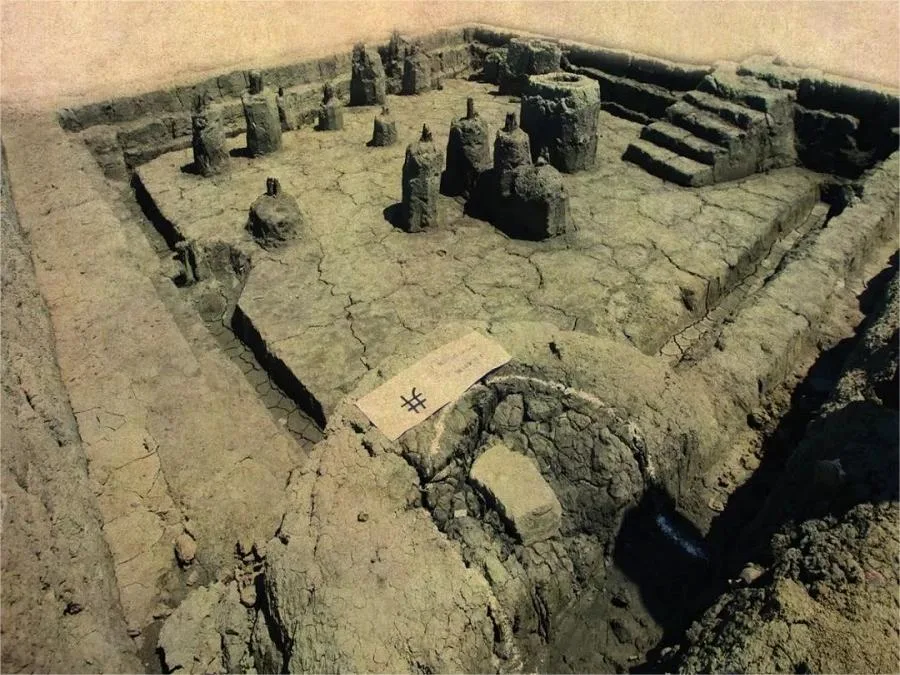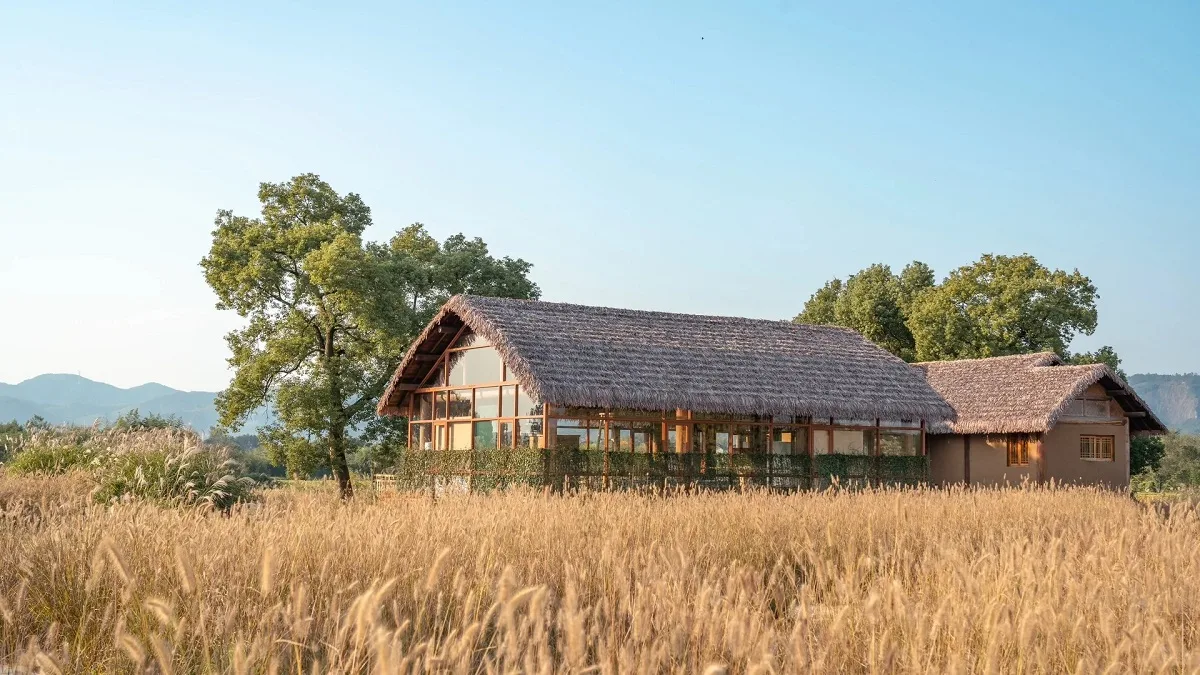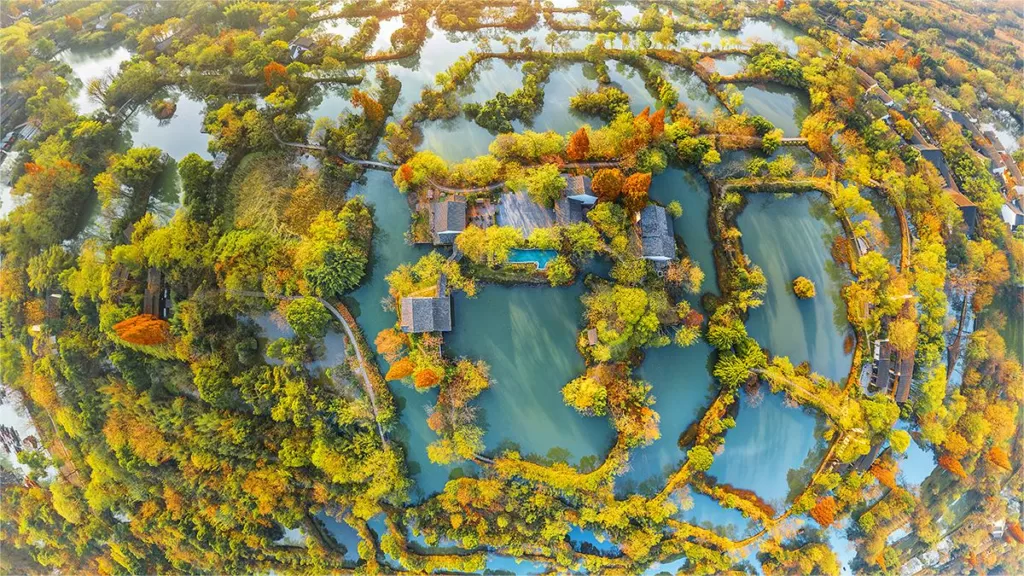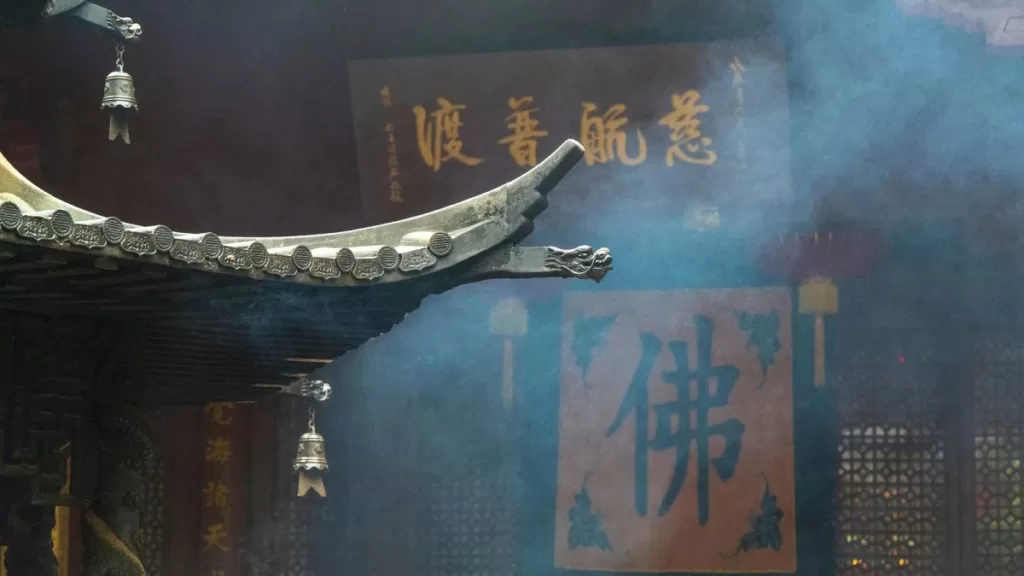The Liangzhu Archaeological Ruins Park (良渚古城遗址公园) is located in the northwest suburbs of Hangzhou, encompassing the towns of Liangzhu and Pingyao. Covering an area of approximately 42 square kilometers, the core area spans 8 million square meters. It comprises the core area of the ancient Liangzhu City, hydraulic systems, sacrificial altar cemeteries, and peripheral suburban regions. Over 300 sites have been discovered here, including high-level tombs, sacrificial altars, a jade ritual system, and the foundations of large palaces.
As the center of power and belief in Liangzhu culture, the archaeological ruins of Liangzhu City reveal the existence of a regional early state in the late Neolithic period, centered around the lower reaches of the Yangtze River and Taihu Lake region. This society relied on rice agriculture as its economic foundation and exhibited clear social stratification and unified beliefs. The site fills a gap in the East Asian Neolithic urban archaeological sites listed on the World Heritage List, providing unique evidence for China’s 5,000 years of civilization history.
Table of Contents
- Basic Information
- Location and Transportation
- Highlights of Liangzhu Archaeological Ruins Park
- Other Iconic Attractions in Hangzhou
Basic Information
| Estimated Length of Tour | 2 – 3 hours |
| Ticket Price | 60 RMB |
| Opening Hours | 9.00 – 17.00; Last admission: 16.00 |
| Telephone Number | 0086-0571-85855300 |
Location and Transportation
The Liangzhu Archaeological Ruins Park is situated in Fengdu Road, Pingyao Town, Yuhang District, Hangzhou City, Zhejiang Province, China. It is located at the junction of the hilly terrain of western Zhejiang and the plain of the Hangzhou-Jiaxing-Huzhou area.
To get there, you can take bus 313, 428M, 430M, 437, 495B, or 7437M and get off at Liangzhu Archaeological Ruins Park South Stop (良渚遗址公园南站).
Highlights of Liangzhu Archaeological Ruins Park
Liangzhu Ancient City

The ancient city of Liangzhu is roughly rectangular with rounded corners, oriented in a north-south direction. It spans approximately 1500-1700 meters in length east to west and 1800-1900 meters in length north to south, covering a total area of over 2.9 million square meters. The city walls were constructed using stone blocks as a foundation, with a width of 40-60 meters. Above the foundation, relatively pure yellow soil was used for construction. Remnants of the walls, over 4 meters high in some areas, still exist. The city features six water gates. Ordinary residents inhabited the outer periphery of the city, while nobles resided atop the 300,000-square-meter Moshan Terrace in the city center. Additionally, the Liangzhu Ancient City contains the prestigious Fanyinshan Cemetery, home to some of the highest-ranking tombs from the late Neolithic period in China.
Hydraulic System

The hydraulic system of Liangzhu is situated in the northwest and north parts of the ancient city and consists of natural mountain formations. There are 11 embankment sites, primarily located at the mouths of valleys between two mountains, divided into two groups: south and north. These embankments form two lines of defense. According to preliminary archaeological research, this hydraulic system served multiple functions such as flood control, transportation, water supply, and irrigation, reflecting the economic and social development of the Liangzhu culture. Experts have confirmed that the peripheral hydraulic system of the Liangzhu Ancient City in Hangzhou is one of China’s earliest large-scale hydraulic engineering projects, dating back 4700 to 5100 years, making it a remarkable feat of ancient engineering and a testament to the sophistication of the Liangzhu civilization.
Numerous Artifacts

The Liangzhu Archaeological Ruins Park is a treasure trove of artifacts that offer profound insights into the ancient Liangzhu civilization. Among the numerous unearthed relics (now housed in Liangzhu Museum), which total over 10,000 items, some of the most representative include jade, pottery, stone, lacquer, bamboo, and bone artifacts. Jade artifacts hold a special significance within the Liangzhu culture, with some of the most iconic pieces being jade cong, jade bi, and divine human-animal face motifs.
The jade cong is perhaps the most important and representative type of jade artifact. Characterized by its cylindrical shape with a circular inner hole and square outer shape, the cong embodies the primitive cosmology of “round sky and square earth.” It is considered an original creation of the Liangzhu culture and serves as a crucial carrier of the worship of gods and spirits depicted in the divine human-animal face motifs.

Jade bi, on the other hand, represents the largest unit area among Liangzhu jade artifacts. These circular jade disks with perforations not only feature unique material selections but also reflect a trend towards pursuing both size and delicacy in their design evolution from early to late periods. Jade bi eventually evolved into specialized jade ritual objects for offering to the heavens, exerting a profound influence even beyond the jade cong.
The divine human-animal face motif is the predominant decorative theme found in Liangzhu jade artifacts and serves as the most direct expression of divine worship. These motifs typically depict a divine figure wearing a feather crown at the top, followed by the fierce face of a beast with round eyes and sharp teeth in the middle, and the talons of a bird at the bottom. This composite representation of humans and animals, with humans occupying a prominent and dominant position within the composition, showcases the belief characteristics of the early rice-based civilization in the Taihu Lake region.








